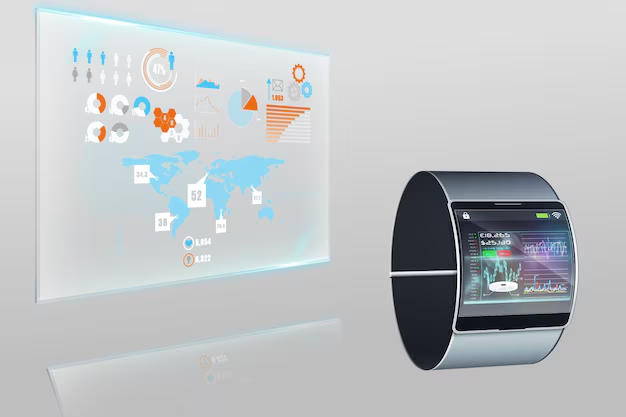Gaining and retaining customers’ attention in the fast-paced, crowded market of today is a never-ending task.
Every business, no matter how big or little, finds it difficult to stand out in the sea of ads vying for consumers’ attention. Lenticular designs provide a revolutionary answer in this regard.
Lenticular technology turns static ads into dynamic, captivating displays that capture viewers by fusing motion, depth, and colorful imagery.
Whether it’s a 3D design or a flipping picture, lenticular effects provide unforgettable moments that make an impact.
In order to guarantee that your campaigns have a big impact, we’ll go over the advantages of lenticular designs, the design process, and best practices in this article.
Understanding Lenticular Technology
It is vital to understand what lenticular technology is before going into the design process. A lenticular print incorporates a lens-like material to produce images that appear different from the viewer’s perspective depending on their orientation.
This lenticular effect is achieved through a combination of two key components:
- Lenticular Lens Sheets: These sheets are made of numerous lenses situated in a very precise manner so that they determine the behavior of light with respect to the print image.
- Interlaced Images: Several images are cut into narrow longitudinal bands and superimposed to match the lenses. The lenses make only one set of strips that are seen from a particular position.
Lenticular designs can produce effects such as:
- Flip: It is made of two or more part images that invert when viewed from some perspective.
- Animation: Sequential frames allow for their synthesis and when joined together, give a feeling of motion.
- 3D Depth: Characters and objects signify depth without the viewers requiring 3D glasses.
- Zoom or Morph: Images grow or transform seamlessly.
Benefits of Lenticular Advertising
Lenticular printing creates a unique visual impact, offering several advantages:
- High Engagement: In general, movement and depth seem to attract consumer attention at a faster pace than still images.
- Memorability: Lenticular effects are memory improving because they leave a lasting impression.
- Versatility: It is possible to apply the lenticular designs in a number of formats ranging from POS displays to magazine covers.
Steps to Create Lenticular Designs
Designing accurate and appealing lenticular designs is a little more complex than just the physical application of the lenticular sheets. Here are the following factors that you need to consider to make your project visually appealing and structurally feasible:
1. Define Your Objectives
Campaign goals are the first thing that you should think about when developing a campaign. Are you aiming to:
- Increase brand awareness?
- Promote a product launch?
- Drive in-store traffic?
It provides clear goals that will define the creative concept of your lenticular design further. For example, the 3D effect may be effective in the context of luxury brand communication, whereas animated flip may emphasize the product’s attributes.
2. Choose the Right Lenticular Effect
Select the effect that aligns with your marketing message:
- Flip: Ideal for when you want to advertise both a before and after image or you have two different brand images to display.
- Animation: Most suitable for the presentation of a set solution or for presenting a sequence of actions.
- 3D Depth: Best for rendering a realistic and high-quality appearance of a material in its finished form.
- Zoom or Morph: Useful for highlighting a salient element of a product, such as morphing forms to demonstrate versatility or zooming into a logo.
3. Plan the Design Layout
Careful preparation is necessary for lenticular designs to provide the desired effects. Important things to think about are:
- Visual Hierarchy: Choose which components—such as the slogan, logo, or product image—will be the main focus.
- Key Points: Steer clear of clutter. To avoid visual confusion, pick one or two main emphasis areas.
- Alignment: To ensure correct interlacing, keep essential design components in line.
4. Develop High-quality Assets
For clarity and accuracy, lenticular printing requires high-resolution photos. Here’s how to get your assets ready:
- Photography: Make use of clear, well-lit photos. Take pictures at slightly various angles to simulate depth if you’re making a 3D effect.
- Graphics: Create scalable vector-based graphics without sacrificing quality.
- Animation Frames: Create separate frames sequentially for motion effects.
5. Ensure Color Accuracy
Because lenticular printing intensifies colors, it’s critical to adjust your design for best results:
- For precise print reproduction, use the CMYK color space.
- Change the brightness and contrast to improve vision through the lens.
- To avoid startling transitions, make sure the colors in each frame are consistent.
6. Work Closely with Your Printer
The method of lenticular printing is quite sophisticated. Collaborate with a qualified printer who is knowledgeable about this technology.
Give them:
- Details: Provide specifics on the type of lens, pitch (lenses per inch), and intended effect.
- Types of Files: Provide high-quality files in TIFF or PSD formats.
- Mockups: To effectively convey your vision, use visual representations.
Best Practices for Effective Lenticular Advertising
Follow these guidelines to get the most out of your lenticular designs:
Don’t Complicate Things
If utilized excessively, lenticular effects can become visually overpowering. Make sure your effects support your message, and limit each design to one or two.
Put Readability First
Adding text to lenticular graphics can be difficult because of the changing angles. In order to maximize readability, use solid and big fonts with limited content.
Select a Strategic Placement
To guarantee that lenticular displays get the most exposure, position them in busy places. For example:
- Retail marketing point-of-sale counters
- Magazine covers for new products
- Booths at trade shows to draw customers
Make Use of Brand Identity
Align your lenticular design with your company’s color palette, typography, and messaging to ensure consistency and strengthen brand identification.
Applications of Lenticular Designs in Marketing
There are several uses for lenticular technology in a variety of sectors.
1. Shop
To attract customers and encourage purchases, design in-store displays that alternate between brand messaging and sales incentives.
2. Packaging
Employ lenticular effects on the packaging, such as a “peel-to-reveal” appearance for multilayer items, to draw attention to distinctive product characteristics.
3. Outdoor Promotion
Both pedestrians and automobiles are drawn in by the dynamic, life-size images that lenticular billboards can produce.
4. Amusement
Entertaining music covers and movie posters may increase collectibility and create enthusiasm.
5. Happenings
Lenticular motifs in advertising materials and event invites generate excitement and give them a high-end look.
Bottomline
Lenticular designs offer a distinctive approach to drawing in customers and setting your business apart.
Keeping abreast of emerging methods and technology can guarantee that your campaigns stay ahead of the curve as this medium develops.
Now is the ideal moment to investigate lenticular designs if you’re prepared to improve your marketing approach and create campaigns that will be genuinely memorable. Begin producing captivating and motivating images right now.
Stay in touch to get more news & updates on Gossips.Blog!




